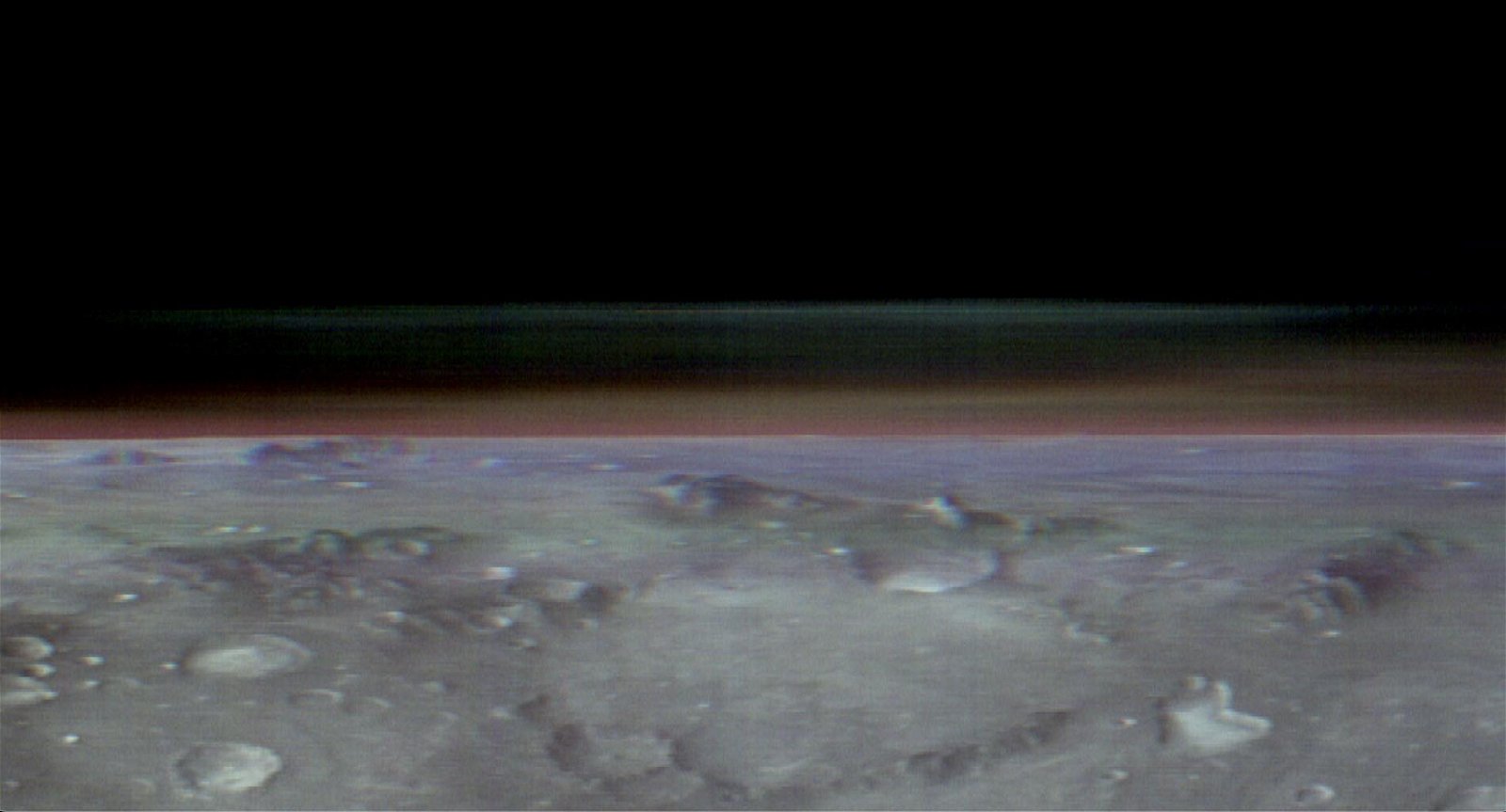An uncommon view of the Martian horizon was recently obtained with help from NASA’s Odyssey orbiter, in new images that captured the dusty skies of the Red Planet, as well as a glimpse at one of the most mysterious objects trapped in its orbit.
The new imagery was captured by the orbiter’s THEMIS camera, presenting a vantage from roughly the same altitude above Mars as the International Space Station (ISS) orbits the Earth.
The images were the result of months of planning by engineers at NASA’s Jet Propulsion Laboratory and its partners at Lockheed Martin Space, showcasing the infrared camera’s ability to detect everything from stony features on the Martian surface to ice and dust in its atmosphere, as well as the subtleties of the planet’s temperatures.


Normally, the THEMIS camera’s design has it pointing straight down, which means the entire spacecraft must be tilted to obtain the view of the Martian atmosphere that the new imagery reveals, a problematic angle for Odyssey since that also means its antenna is pointed away from Earth, which temporarily blocked radio communication.
However, while positioned to photograph the Martian atmosphere, Odyssey’s successful operation also managed to obtain images of one of the Red Planet’s great mysteries: its irregularly shaped moon, Phobos.
The largest of the Martian moons and with a shape that is often likened to a potato, Phobos boasts a massive crater on one end and orbits about 3,700 miles above the Martian surface. Given its close distance, it is the innermost of the Red Planet’s natural satellites, possessing the closest orbit of any known natural object to its nearest planetary body.
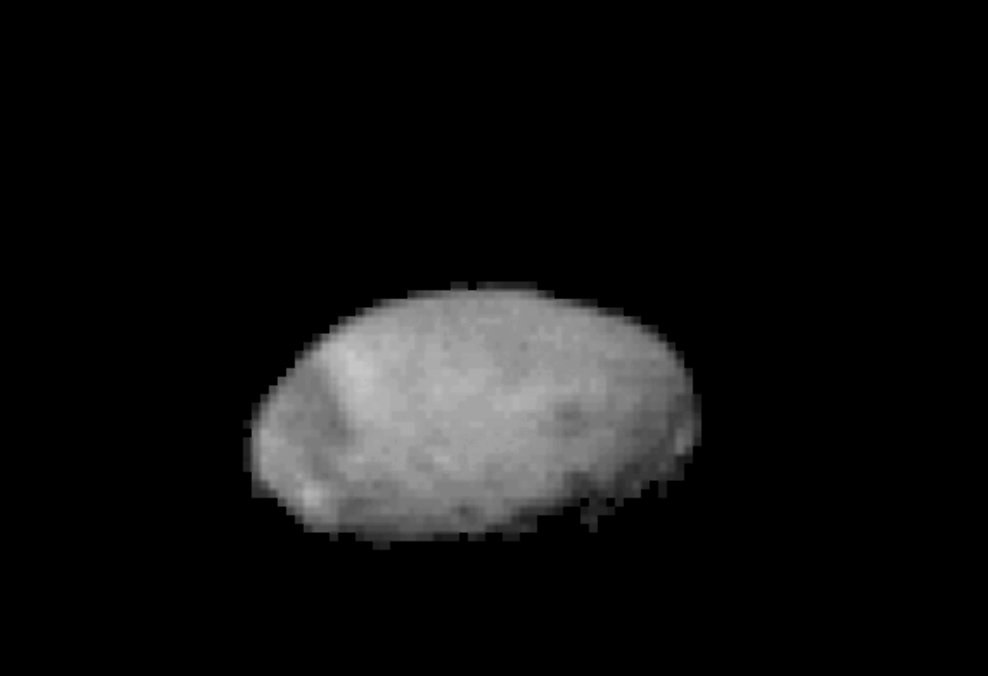

Discovered in the summer of 1877 by the American astronomer Asaph Hall, Phobos and its sibling moon, Deimos, were named after the sons of the Greek god Ares, whose Roman counterpart is the planet’s namesake. According to Greek tradition, Phobos was the god of fear and panic, which is a surprisingly appropriate name given the speed at which Phobos races around the Red Planet: it completes each of its orbits in just 7 hours and 39 minutes.
Odd Features and Unknown Structures Within Phobos
Several questions remain about Phobos, which include its composition and internal structure, as well as its mysterious origin. The darkest moon ever discovered by astronomers, it has been theorized that Phobos’ dim coloration suggests a composition of dark rock and ice. This, along with its odd shape and the peculiarities of its orbit, hints that Phobos may have been an asteroid that became captured in orbit around Mars at some point in the distant past.
Phobos also possesses a series of unusual straight lines, which may suggest odd structural features beneath its surface or even that it is slowly being torn apart as its rapid orbit brings it nearer to the surface of Mars, where it may eventually collide with the Red Planet.
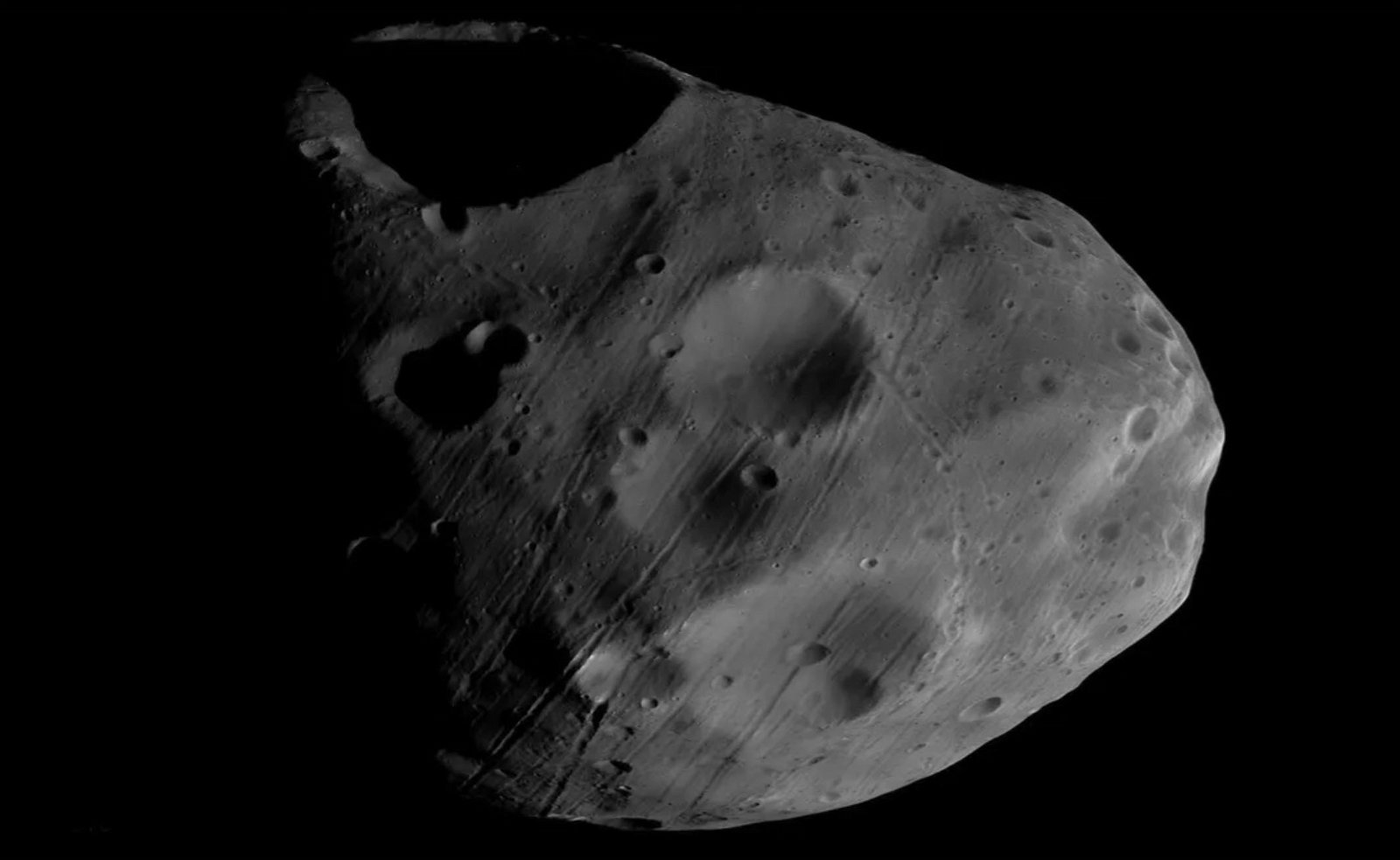

Although the idea that Phobos is being gradually disassembled as Mars drags the curious moon toward its surface remains a possibility, radar detections made in 2022 by Europe’s Mars Express spacecraft suggest the presence of unknown structures within the object, which could also account for its unusual “tiger striped” appearance.
On September 22, 2022, Mars Express was able to use its Mars Advanced Radar for Subsurface and Ionosphere Sounding (MARSIS) instrument to peer beyond the surface of Phobos, revealing the presence of the moon’s odd inner structures.
Following the odd detections, Andrea Cicchetti with the MARSIS team said they revealed “possible signs of previously unknown features below the moon’s surface.”
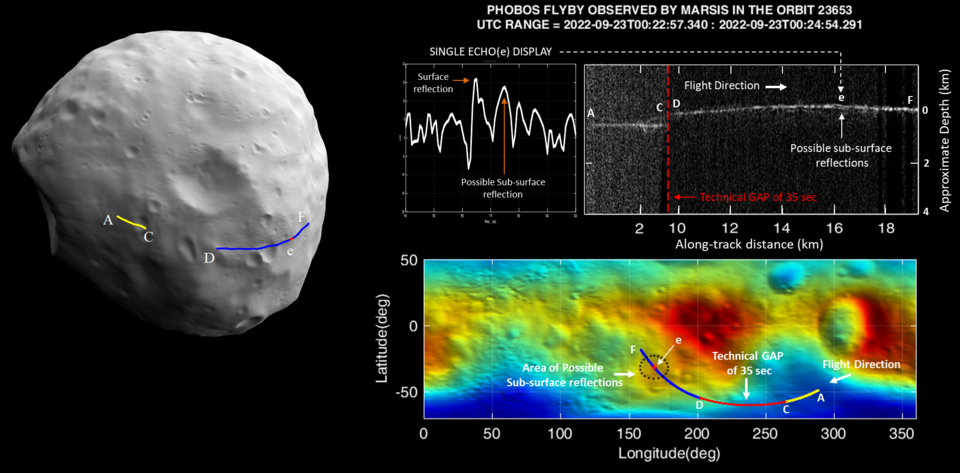

“We are excited to see the role that MARSIS might play in finally solving the mystery surrounding Phobos’ origin,” Cicchetti said of the findings.
The Phobos Monolith
On September 12, 1998, several of the highest-resolution images of Phobos that had ever been obtained at that time were captured by the Mars Global Surveyor (MGS) spacecraft as it completed its fourth pass by the object and used its Mars Orbiter Camera (MOC) to photograph the odd moon, revealing the most detailed view of the Martian moon’s features that had ever been available.
Peppered with boulders that were likely ejected from the impact that formed the moon’s massive Stickney crater, the high-resolution images of the surface of Phobos revealed a genuine curiosity: an unusually large feature that cast an elongated shadow, suggesting that the strange object was massive not only in diameter but also in height.
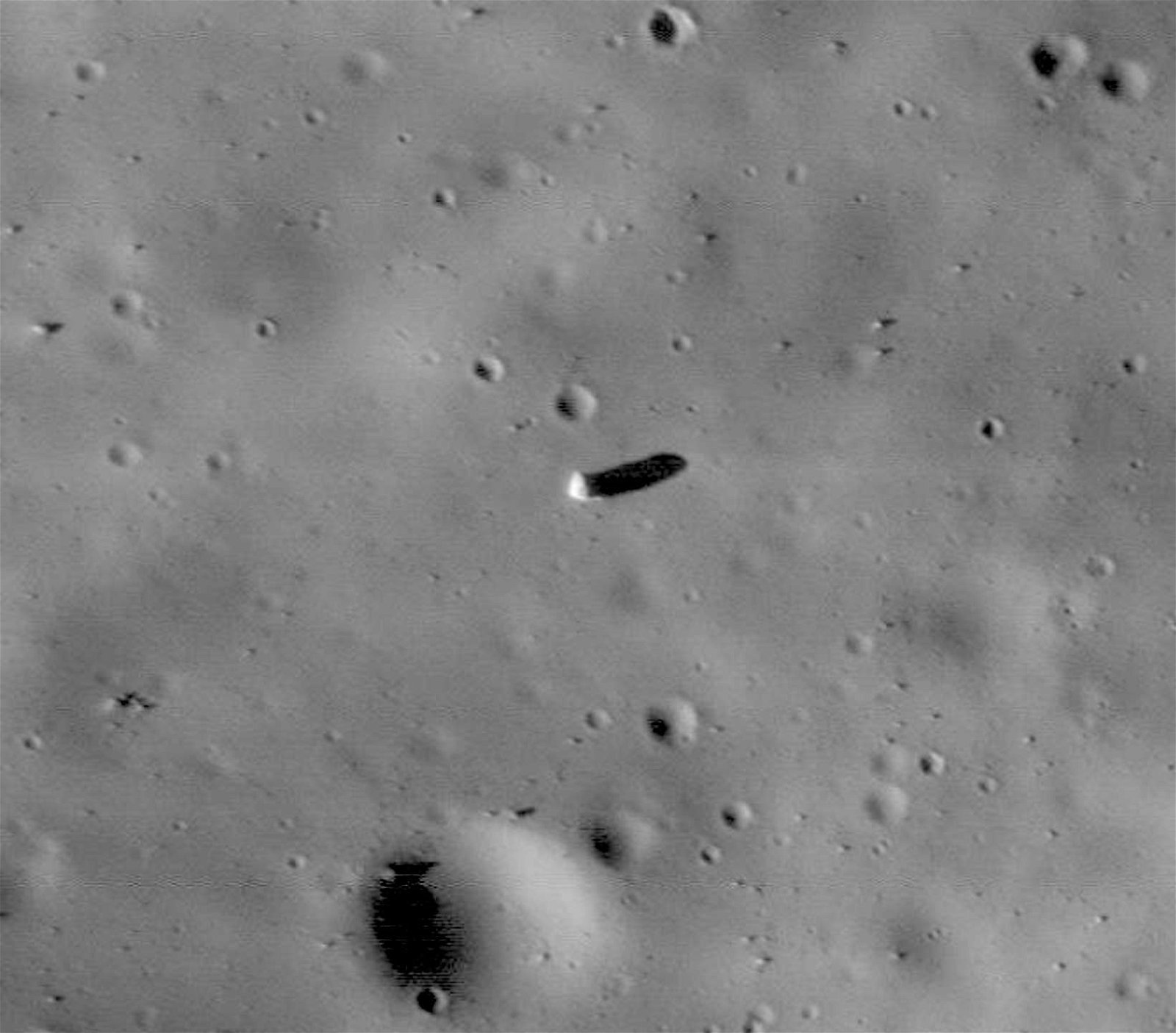

Popularly known as the Phobos monolith, the object is believed to be a very large and unusually shaped boulder, possessing an equally curious orientation: its height of close to 300 feet, based on the length of the shadow it casts, exceeds its estimated width of approximately 279 feet across.
The strange feature was discovered by amateur astronomer Efrain Palermo in the late 1990s while conducting detailed surveys of the Phobos imagery, with additional studies of its size and features later undertaken by imaging analyst Lan Fleming, who at the time worked at NASA Johnson Space Center. However, the monolith received renewed attention in 2009 after astronaut Buzz Aldrin made a series of cryptic references to the object during an appearance on C-SPAN.
“There’s a monolith there. A very unusual structure on this little potato-shaped object that goes around Mars once in seven hours,” Aldrin said excitedly.
“When people find out about that, they’re gonna say, ‘Who put that there! Who put that there?’”
“Well, the universe put that there,” Aldrin said, alluding to its likely natural origin. “If you choose, God put that there.”
The area around the so-called monolith has been discussed as a landing site for future robotic missions, such as the Phobos Reconnaissance and International Mars Exploration (PRIME) mission, a joint effort between Teledyne Optech and the Mars Institute proposed in 2007, which never garnered funding.
New Imagery and New Horizons
Although the new images are the latest to capture Phobos in its racetrack orbit around Mars, this was not the first time NASA has used the Odyssey orbiter’s THEMIS camera to obtain imagery of the moon. In fact, the recent images mark the seventh time in more than two decades that such images have been obtained with the camera, which helps to provide information about changes in temperature that occur on what is arguably the most unusual moon in our solar system.
However, the newest set of images did manage to offer some unique new additions.
“We got a different angle and lighting conditions of Phobos than we’re used to,” said Dr. Jonathon Hill, a mission planner at Arizona State University’s Mars Space Flight Facility.
“That makes it a unique part of our Phobos dataset.”
Hill and his colleagues say the new imagery helps to offer insights into the moon, its structure, and composition and may eventually provide data points that could help to determine once and for all whether Phobos is an asteroid caught in orbit around the Red Planet, or possibly a massive chunk of the planet’s surface that became dislodged following an impact at some point in the past.
In the future, NASA also plans to participate in a joint effort with the Japan Aerospace Exploration Agency (JAXA), the Mars Moon eXplorer (MMX), which aims to retrieve samples from Phobos and Deimos. The new imagery could be helpful in planning for the retrieval mission, which could provide material from the surface of Phobos, which may assist scientists in unraveling some of the moon’s lingering mysteries.
Micah Hanks is the Editor-in-Chief and Co-Founder of The Debrief. He can be reached by email at micah@thedebrief.org. Follow his work at micahhanks.com and on X: @MicahHanks.
